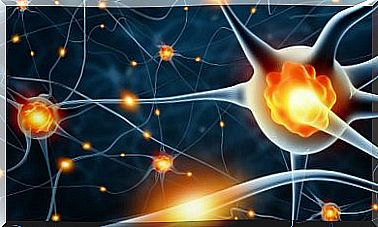Fluoxetine: Uses And Side Effects
Fluoxetine is an antidepressant drug that belongs to the group of selective serotonin reuptake inhibitors (SSRIs). It works by selectively inhibiting the reuptake of serotonin in the neuronal presynaptic membrane. In this way, it enhances the effect of this neurotransmitter.
On the other hand, fluoxetine hardly exhibits anticholinergic and sedative activity as side effects. Let’s see what it is used for and what precautions to take.
Fluoxetine indications
In adults, fluoxetine has several indications, however, the best known is the treatment of depression, both mild and severe. It is frequently used to treat anxiety and also in obsessive compulsive disorders (OCD). It is also indicated in some eating disorders such as bulimia nervosa. In these patients, it is indicated as a complement to psychotherapy.
Fluoxetine is used in children from 8 years of age and in adolescents to treat moderate or severe depressive episodes when there is no response to psychological therapy. In these patients, there should always be a combination of the drug with psychological therapy.
How to take fluoxetine
This drug comes as dispersible tablets or capsules for oral administration. It can be administered with or without food, but if there is gastrointestinal discomfort, it may be appropriate to administer the drug with food.
The usual thing is to take it in the morning, initially, at a small dose that you will increase as indicated by the doctor. Its use is usually avoided at night because it can worsen sleep, although sometimes the dose is divided into two doses a day.
On the other hand, fluoxetine is rapidly absorbed, obtaining its maximum plasma concentration after 6-8 hours. It is extensively metabolized in the liver, giving rise to an active metabolite called norfluoxetine .
It is mainly eliminated in the urine as a metabolite and a small percentage is eliminated unchanged. This drug takes 4 to 6 days to clear and its active metabolite 4 to 16 days. In the case of liver failure, it takes longer to be expelled from the body.
Posology
Adults
The maximum dose of fluoxetine for any indication is 80 milligrams per day in adults. Let’s see the recommended doses for the different indications:
- Depression: 20 milligrams a day, in the morning. After several weeks of treatment, the daily dose can be increased, if necessary, to a maximum of 80 mg / day. Doses greater than 20 mg / day should be administered in two doses.
- Bulimia: 60 mg / day.
- Obsessive compulsive disorder : 20-60 mg / day. Starting doses of 40-60 milligrams have shown a faster onset of action than those of patients taking 20 mg / day.
Elderly
The maximum dose of fluoxetine in this group of patients is 60 milligrams per day. In general, a dose of 20 mg / day is recommended. In rare cases, it will go above 40 mg / day. In cases of serious liver dysfunction or kidney failure, the dose should be reduced to 20 milligrams every 48 hours.
Contraindications
According to scientific evidence, contraindications for fluoxetine include:
- Allergy to fluoxetine.
- Severe renal insufficiency.
- Unstable or uncontrolled epilepsy.
- The association with a monoamine oxidase inhibitor (MAOI) : should not be administered in combination with MAOI, nor during the 14 days after stopping treatment with an MAOI. Since fluoxetine and its main metabolite have long elimination half-lives, a minimum of 5 weeks should elapse between stopping fluoxetine and starting treatment with MAOIs.
Adverse effects of fluoxetine
In general, the adverse effects of fluoxetine are common, although moderately important. In most cases, the adverse reactions are a prolongation of the pharmacological action and mainly affect the central nervous system.
The most common adverse reactions are the following:
- Headache
- Diarrhea and nausea
- Anxiety and insomnia.
- Anorexia and weight loss.
However, occasionally, effects such as tremor, dizziness, dry mouth, mania or hypomania may appear. Sometimes there is even asthenia, sedation, reduced libido, sweating, abdominal pain, itching, flu-like symptoms, palpitations and urinary incontinence.
More rarely, seizures, akathisia, ataxia, hallucinations, neuropathy, psychosis, stomatitis, gingivitis, epistaxis, contact dermatitis, alopecia, and hypotension may occur. Treatment should be stopped immediately in the event that you experience any episode of rash.
Fluoxetine is a rapidly absorbed drug that may require 2 to 4 weeks of treatment to achieve a significant clinical response.









